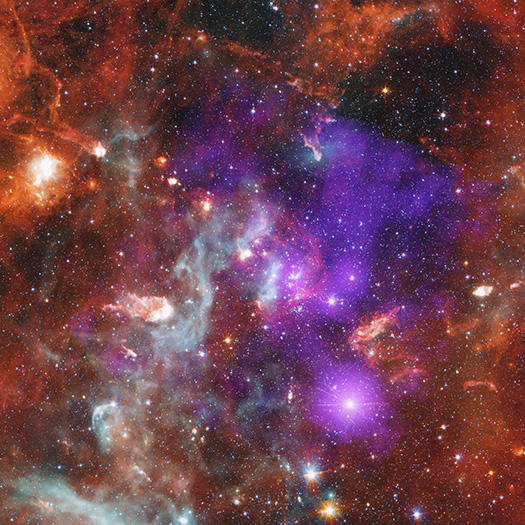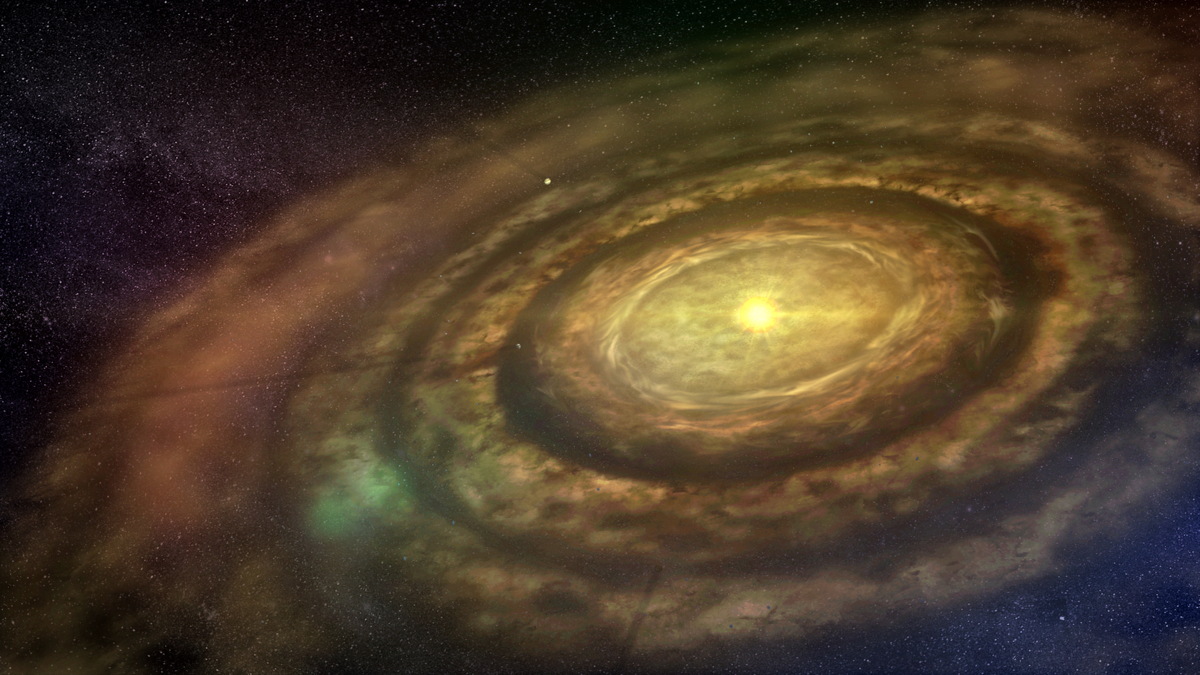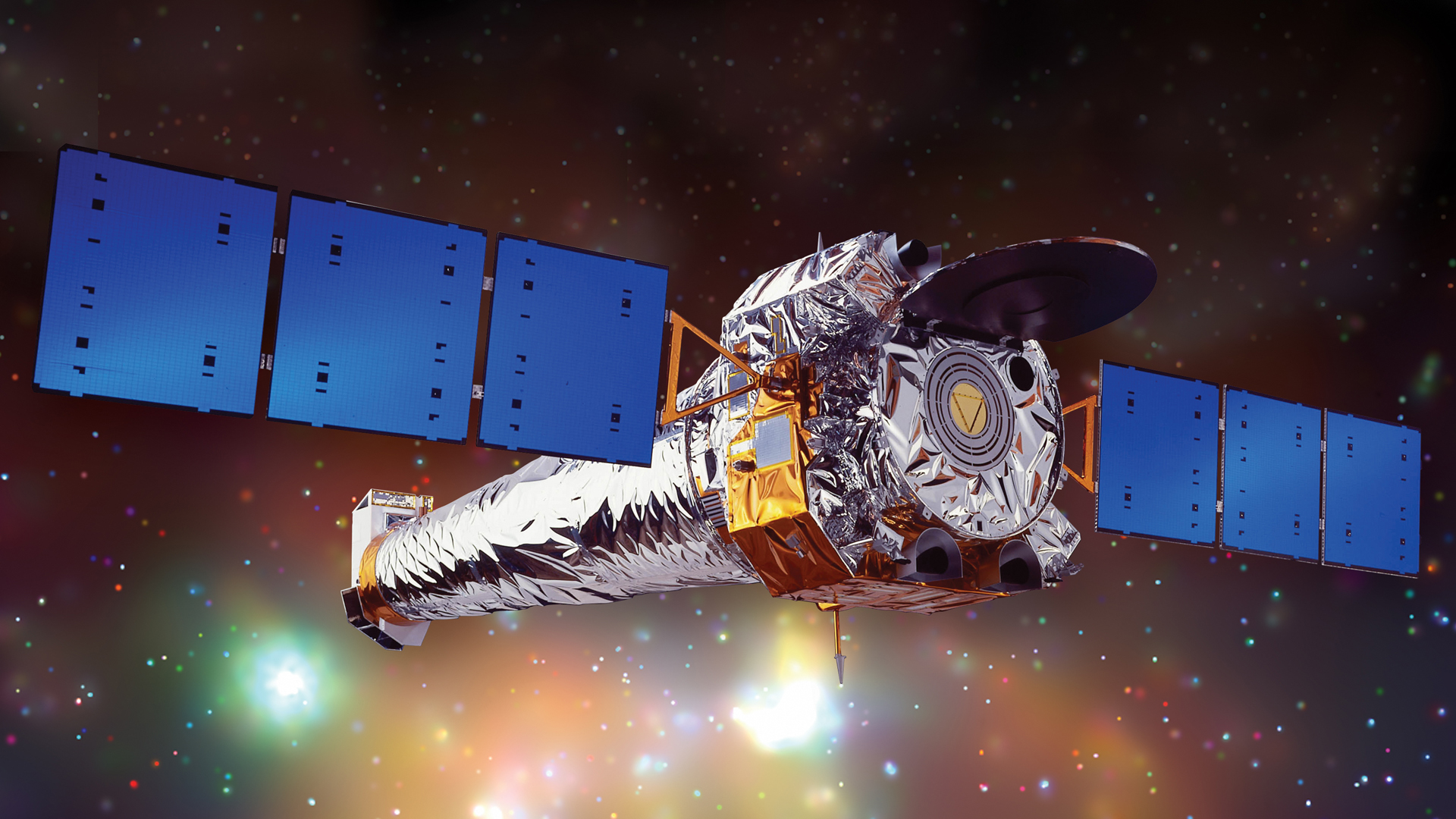NASA's Chandra X-ray spacecraft finds 'danger zones' around stars
Planet-forming disks are rapidly disintegrated when blasted with high-energy radiation from massive young stars.
Using NASA's space-based Chandra X-ray Observatory and the retired Spitzer Space Telescope, astronomers have discovered "danger zones" for planets that are forming around young stars.
The team found these treacherous regions by performing long-term observations of an object known as Cygnus OB2. At 4,600 light-years away, this is the closest large star cluster to Earth, home to hundreds of massive stars and thousands more lower-mass stars. The astronomers took the resultant images and "stitched" them together to create a large mosaic.
By highlighting the glow of high-energy X-rays between stars, the team was able to build an inventory of bright young stars in Cygnus OB2. They took this inventory and combined it with optical and infrared data from Spitzer to create a comprehensive stellar census of Cygnus OB2.

"In this new composite image, the Chandra data (purple) shows the diffuse X-ray emission and young stars in Cygnus OB2, and infrared data from NASA's now-retired Spitzer Space Telescope (red, green, blue and cyan) reveals young stars and the cooler dust and gas throughout the region," NASA writes on the Chandra website.
The danger to forming planets in densely packed star clusters like Cygnus OB2 comes from high-energy ultraviolet and X-ray radiation blasted out in excess by massive infant stars. This radiation impacts dense, swirling and flattened clouds of planet-forming dust and gas around the young stellar bodies called "protoplanetary disks."
Massive young stars blast potential planets out of existance
Around 4.6 billion years ago, the sun itself was surrounded by a protoplanetary disk from which the planets, including Earth, took shape. As the absence of this disk in the modern solar system suggests, protoplanetary disks don't stick around for too long after birthing planets.
Intense high-energy radiation from a star can cause the disk's material to evaporate, a process astronomers call "photoevaporation." After this, the photoevaporated matter is pushed away from the star by radiation pressure, creating so-called "disk winds" blowing from the star's vicinity.
Get the Space.com Newsletter
Breaking space news, the latest updates on rocket launches, skywatching events and more!
For an average-mass star like the sun, photoevaporation and disk winds take between 5 million and 10 million years to completely disintegrate a protoplanetary disk. However, the excess of ultraviolet and X-ray radiation pumped out by more massive young stars can accelerate this protoplanetary disk depletion process.

Data from Chandra and Spitzer helped the team find evidence of the rapid dissipation of planet-birthing protoplanetary disks that have been blasted with high-energy light from massive young stars.
The researchers also discovered that this disk dissipation is particularly rapid in regions that feature many closely packed stars.

Around 40% of young stars have protoplanetary disks in regions of Cygnus OB2 with less massive stars and, thus, less high-energy radiation. This proportion of disk-encircled stars dropped to 18% in regions of the star cluster with more X-ray and ultraviolet light and more crowded star fields.
The team also discovered that the strongest disk disintegration effect in Cygnus OB2 was found within a region around 1.6 light-years away from the cluster's most massive stars. In the most densely packed regions of Cygnus OB2, the researchers found protoplanetary disk possession dropped as low as 1%. That would, therefore, be the worst place for planets to attempt to form.
These regions are the aforementioned "danger zones" found by the team.
Complimenting these findings, a separate research team used Chandra data to probe the characteristics of X-ray emissions from Cygnus OB2. That team found that higher-energy emissions originated from regions of the star cluster where disk winds blowing from around massive stars have slammed into each other. Such collisions heat the gas in the winds, causing the emission of X-rays.
The researchers also found that less energetic emissions originating from these disk winds collided with cooler gas surrounding the cluster.
The "danger zone" research was published in The Astrophysical Journal on Monday (Oct. 28), and the complementary research was also published in the same journal.
Join our Space Forums to keep talking space on the latest missions, night sky and more! And if you have a news tip, correction or comment, let us know at: community@space.com.

Robert Lea is a science journalist in the U.K. whose articles have been published in Physics World, New Scientist, Astronomy Magazine, All About Space, Newsweek and ZME Science. He also writes about science communication for Elsevier and the European Journal of Physics. Rob holds a bachelor of science degree in physics and astronomy from the U.K.’s Open University. Follow him on Twitter @sciencef1rst.









